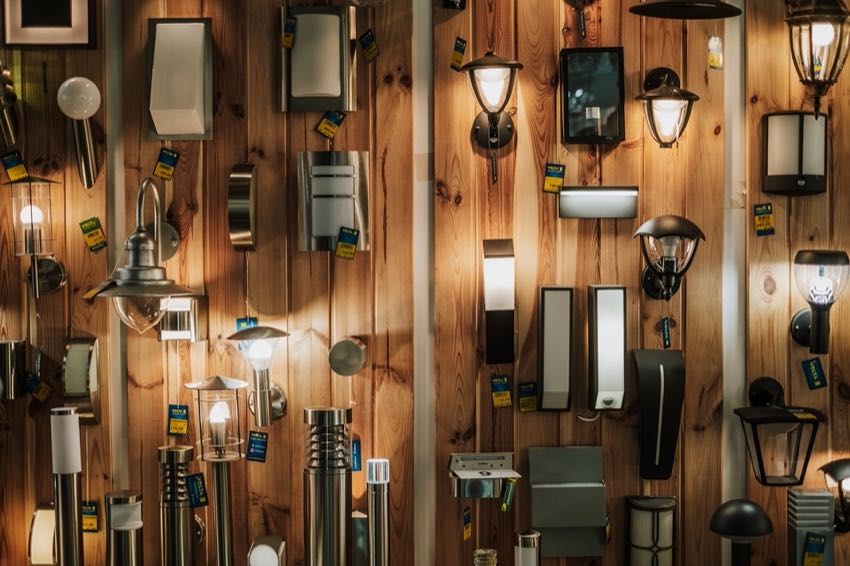Lighting has been a big part of what I do professionally for over thirty years. I am a professional photographer and videographer for the Polk Museum of Art in Lakeland, FL. Nineteen of those years were spent as the exhibits manager. An exhibits manager is the person that oversees the installations of the art exhibits in a museum, which includes lighting each work of art. Choosing between incandescent vs LED lighting and fluorescent and knowing the ins and outs of each lamp and fixture has a necessary part of my job…or should I say jobs.
At first, lighting wasn’t nearly as complicated as it is today. You had fluorescent or incandescent and a few other variants for specialized uses like mercury vapor, sodium vapor, halogen (a type of incandescent bulb), etc. When comparing incandescent vs LED lighting, you have a host of new things to learn. We hope this incandescent vs LED and fluorescent lighting guide helps you learn all the important things you need to choose the right products. That goes for your home, office, workshop, jobsite—even your flashlights! We can’t put everything in one article, so check out these articles for more information:
- 9 Things to Consider Before Switching to LED Lighting
- LED Jobsite Lights Buying Guide
- Flashlight discussion forums
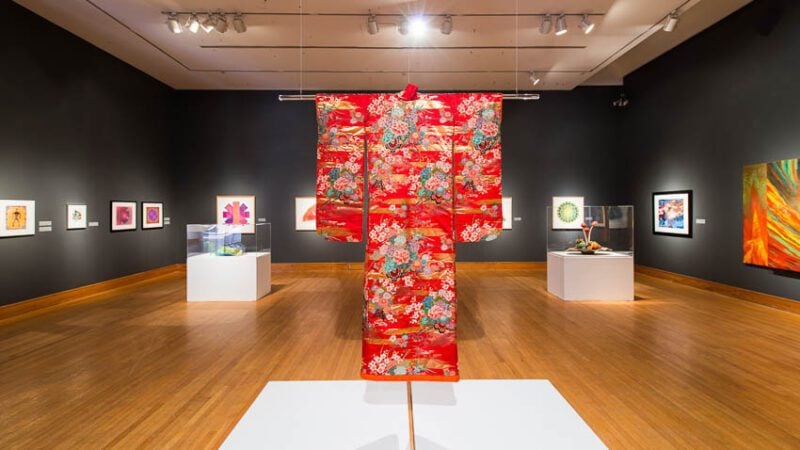
Incandescent vs LED Lighting Table of Contents
- Incandescent vs LED Lighting and Fluorescent – Pros and Cons
- CRI – Color Rendering Index
- Color Temperature – The Kelvin Scale
- Color Temperature Buying Recommendations
- Bulb Life – LED Lighting Wins By A Mile
- Throw Angles: Spot Lights vs Flood Light vs In-Between
- Lumens, Watts, and Energy Use – LED Lighting Wins vs Incandescent Again
- The Dark Side of Lighting
- RGB LED Lighting – The Latest Fad
- When in Doubt, Seek Professional Help…with Your LED Lighting
- Fluorescent vs LED vs Incandescent Lighting Summary
Incandescent vs LED Lighting and Fluorescent – Pros and Cons
Just for context, an incandescent bulb is also known as a tungsten bulb. You probably know it best as a plain old-fashioned “lightbulb”. They come in many shapes and sizes. An Edison base or Edison screw base is used with most of these common lamps. Other styles include various sizes of pin-style bases and smaller Edison bases called candelabra bases. For a good size and base comparison chart of the different incandescent vs LED lighting bulbs, go to Bulbs.com.
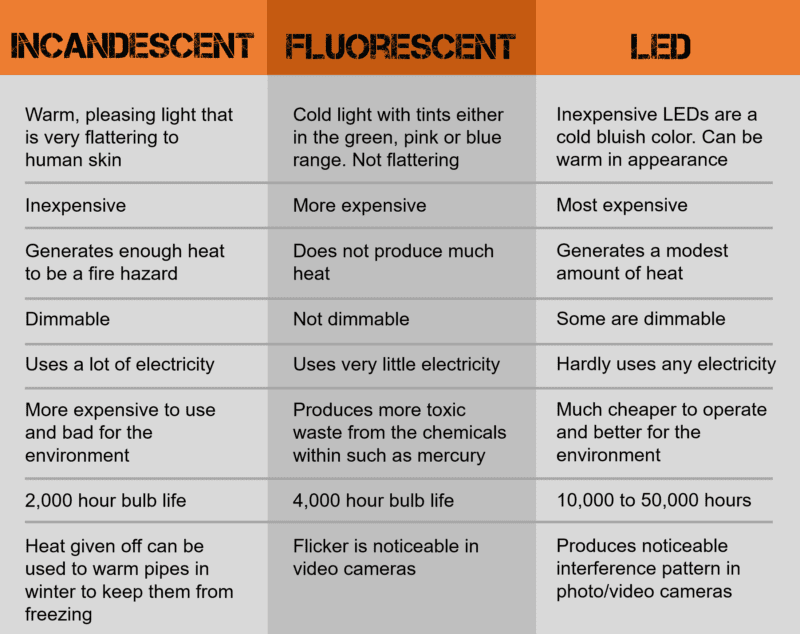
CRI – Color Rendering Index
No matter if you’re considering incandescent vs LED lighting, you will often encounter a number called CRI. CRI (Color Rendering Index) is a scale that tells you how well the light renders accurate colors. Natural midday daylight has a CRI of 100 and renders colors faithfully. Incandescent lightbulbs also have a CRI of 100. Anything 80 and above is considered good. Anything in the 50 range is poor. Sodium Vapor street lights (the orange ones) have a CRI of 25.
Early LED bulbs were very blue in appearance. That LED lighting did a poor job vs traditional incandescent bulbs at rendering natural-looking colors. Artists, designers, hair salons, automotive painters, etc. will typically only work in 90+ CRI lighting. Clothing retailers prefer 80+ CRI.
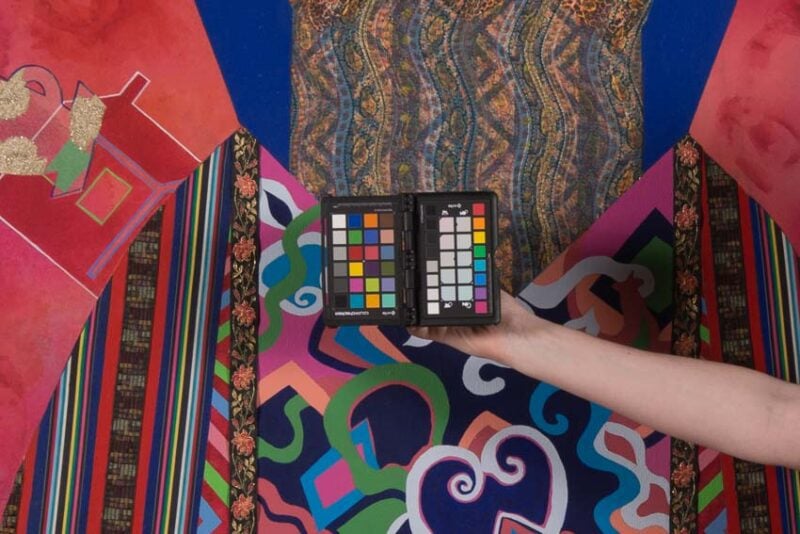
Color Temperature – The Kelvin Scale
Have you ever purchased a new light bulb but the color it gives off is wrong? Suddenly, one bulb has a different color cast from the rest of the light bulbs. Your new lightbulb looks out of place. The new bulb might be warmer (more yellow) or cooler (more blue). You photographers out there know exactly what the problem is! It’s the same as the white balance feature on a camera.

It doesn’t matter what type of lighting you choose (incandescent vs LED vs fluorescent). The “whiteness” of each and every lightbulb is measured on the Kelvin (K) scale. This scale ranges from yellow to blue with daylight in the middle. Any lightbulb with 5000K to 5600K is considered daylight balanced and produces light similar to sunlight during the middle of the day. Bulbs marked 2700K to 3000K are warm yellow. These have the look of incandescent bulbs.
Bulbs at 6500K or above make people look awful. We don’t tend to see these very often. The one place I have seen them is in hospitals. They make every scar, every mole, and every skin imperfection show up. Perhaps this makes it easier to identify issues with patients—of course, that’s just speculation. Needless to say, you don’t want these bulbs in your bedroom!
4000K bulbs are marketed as true white bulbs being halfway between warm and daylight. I find they are actually pretty useless in most circumstances as they will not match either daylight bulbs or warm bulbs so they will look out of place unless you replace every light in your house with these. This is why you don’t see them that often on store shelves. Many shop lights and worklights, however, seem to come in this color temperature.
Color Temperature Buying Recommendations
Why We Like Warm Lighting
Since the dawn of humanity, human eyes have been using fire as our primary light source. Consequently, people look good when lit with firelight. In the past, the incandescent vs LED debate meant that, if you wanted to mimic the coloration of fire, you had to go with incandescent bulbs. Now, LED bulbs can match that fireside color (2700K). Using 2700K bulbs around your home definitely makes it look warm and cozy.
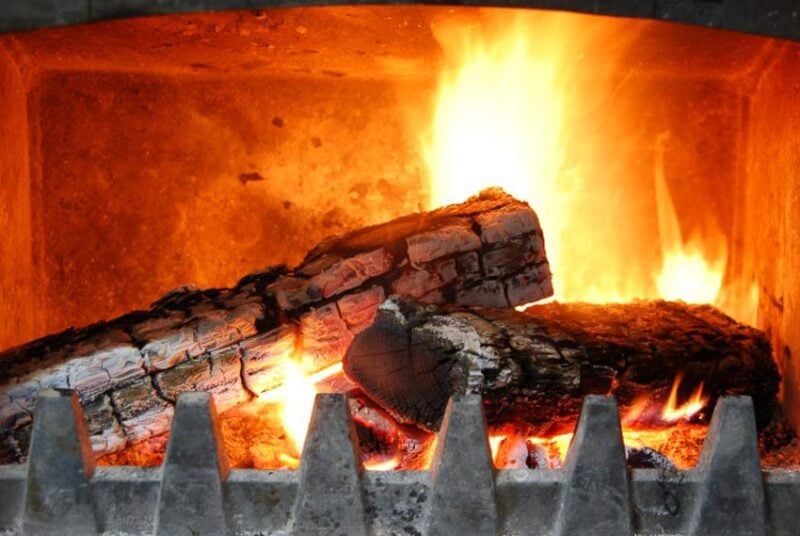
2700K bulbs in the bedroom will make it look more romantic. 3000K in the kitchen and bathrooms will make it look cleaner as the added blue makes whites look a little brighter. In the rest of the house, just make sure you use the exact same color temperature in each room. Don’t mix and match 2700K with 3000K. I also don’t like to mix brands. Each brand can have a slight tint to them toward either green or pink. Anywhere you have fluorescent lighting, you may have a hard time getting 2700K bulbs. However, you can find Kitchen and Bath bulbs which are usually 3300K and match well enough.
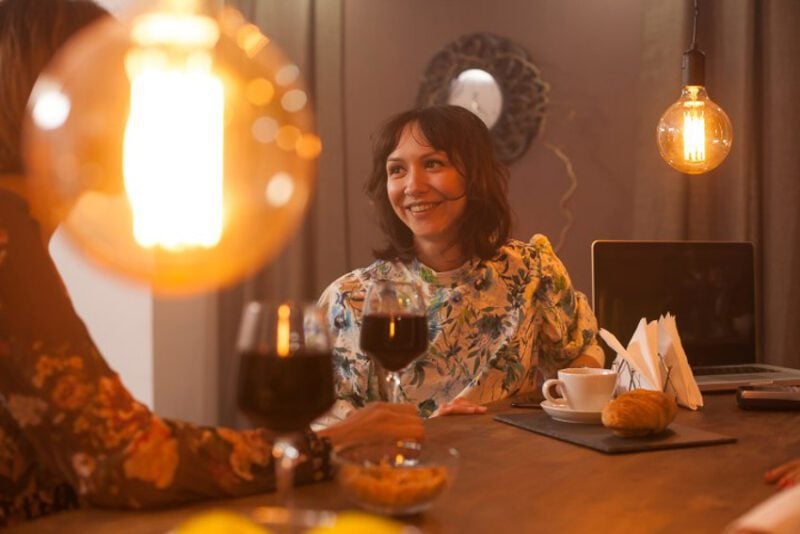
Cooler Lighting for Workshops and Garages
In your workshop, garage, family gym, etc, try to find 5500K bulbs. These give you good visibility for most tasks. You can also use these bulbs in your laundry rooms to make your whites look whiter and cleaner.
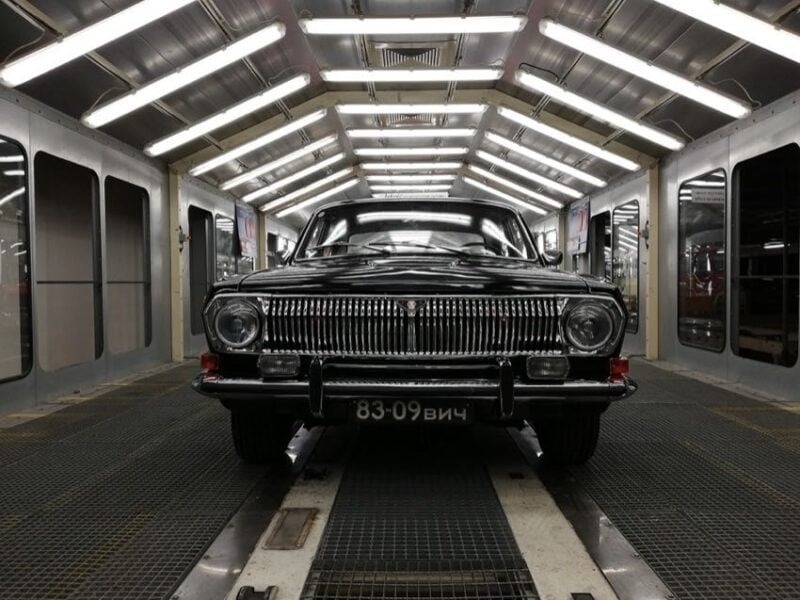
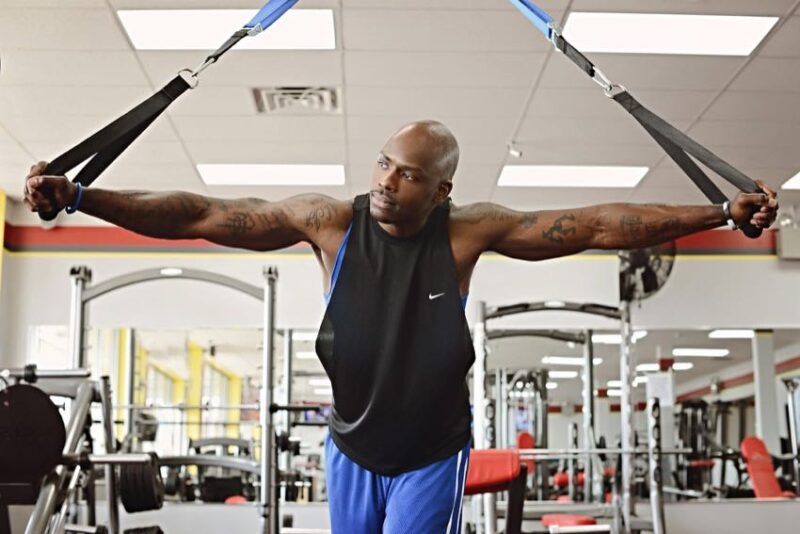
There are two exceptions. Artists usually prefer 2700K which is why museums use 2700K bulbs to light exhibits. Regardless of the choice of incandescent vs LED, that is the way the artists intended you to see the artwork.
Author’s Note: Check out our article on using color correcting gels in lighting applications to see how you might get even more use out of your existing lights.
Soft White is the Marketing Term for White
Lightbulbs used to be clear so you could see the filament within. This also made them extremely harsh (they cast a lot of hard-edged shadows). Then someone got the idea to frost the bulb and the term Soft White was born. Soft white bulbs are only “very” harsh, lol. You still see that term on some boxes, but these days, clear lights bulbs are considered specialty bulbs. You pay more for bulbs where you can see the not-really-a-filament within.
Woodworking – A Notable Exception
The other exception is woodworkers. Wood looks its best under the warm glow of 2700K lights, especially during the finishing stages. Most people’s houses are 3000K and below. If you are doing your staining and varnishing at 5000K, you will not see what your work actually looks like until you put it in your home or your client’s home. That is not the time to decide you don’t like the color!
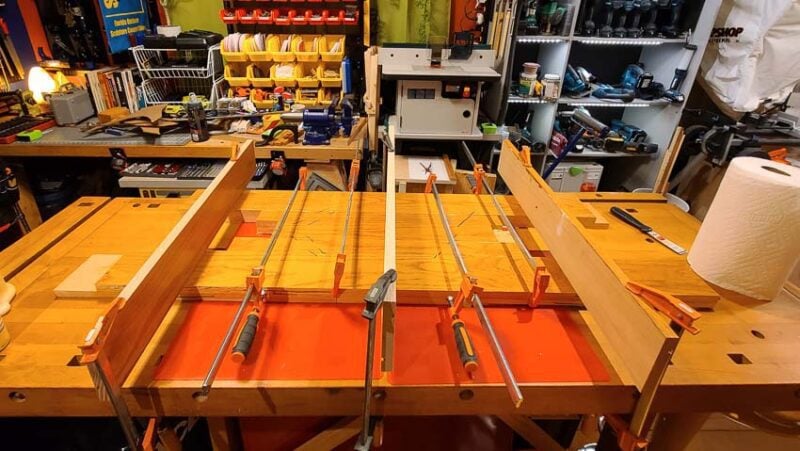
Factories, Manufacturing, and Mills
It’s not all incandescent vs LED. Factories often choose Mercury vapor lamps because of the long-life bulbs, not because of the color accuracy. You will often see these in gymnasiums, large retail stores, and manufacturing plants with high ceilings. Changing these bulbs less often is a higher priority than worker or athlete comfort.
In manufacturing facilities and retail spaces that do require accurate color rendering, fluorescent bulbs in the 5000K to 5500K range were popular for a long time. Now, we see these facility managers questioning fluorescent vs LED for their energy savings and long life.
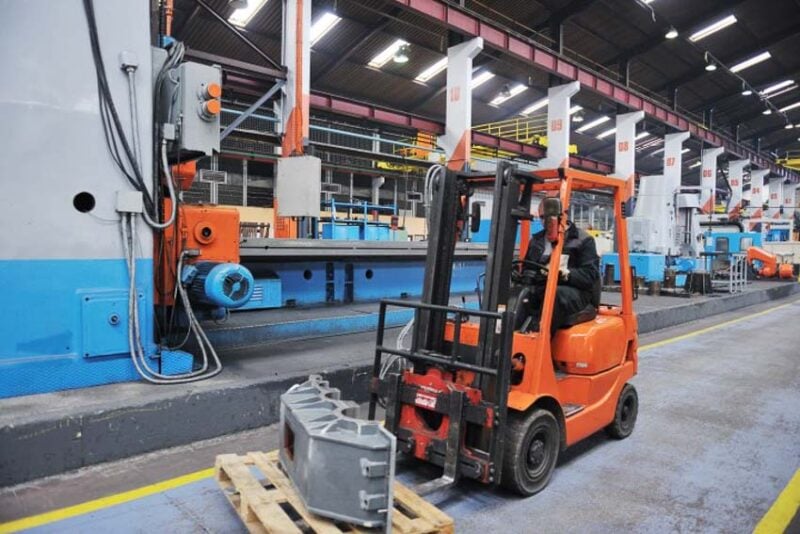
Steel mills will often use sodium vapor lamps. These have an orange tint to them and don’t render colors accurately at all but it hardly matters given the type of work done there. What they do provide is long-life bulbs that can handle high temperatures.
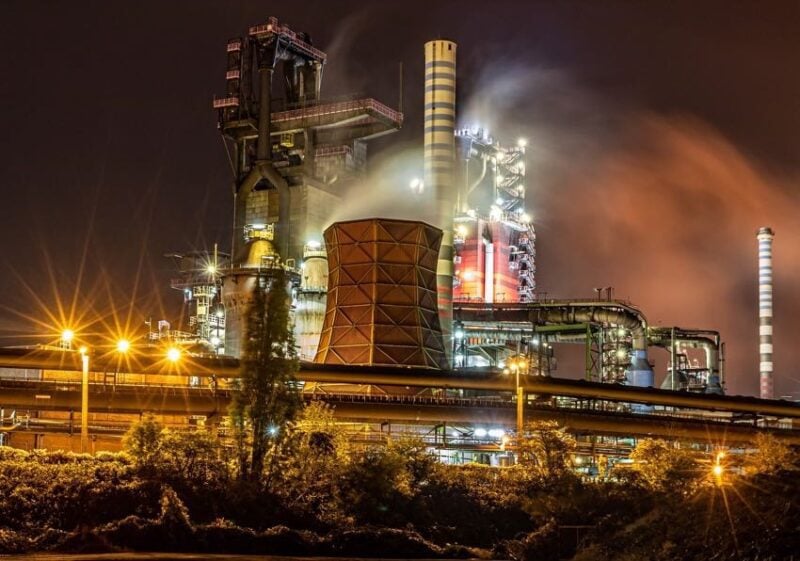
Bulb Life – LED Lighting Wins By A Mile
Incandescent bulbs roughly last 2,000 hours. Fluorescent bulbs extend that to 4,000 hours. LED lamps last 10,000+ hours for inexpensive lamps and up to 50,000 hours for some of them. I just bought a 6-pack of LED Edison style (the old fashion lightbulbs) for $9.99 at the grocery store. Each comes rated for 11,000 hours. These also use about 90% less electricity and the light looks just as nice as the old incandescent bulbs.
Keep in mind, however, that while the LED technology on these bulbs is rated for tens of thousands of hours, the electronics are much more fragile than an incandescent bulb. These bulbs are susceptible to static and electrical interference from storms and brownouts. That can decrease their life even though the lamp diodes work just fine. As far as we’re aware, warranties on LED bulbs can be anywhere from 1 to 5 years—but be prepared to pay shipping and provide proof of purchase to get one replaced.
Throw Angles: Spot Lights vs Flood Light vs In-Between
Traditionally, bulbs that were not a traditional “lightbulb” shape or which otherwise sent light in all directions were classified as either a spot or a floodlight. You can measure both spots and floods in angles. 10 degrees was normal for a spotlight and 30 degrees for a floodlight. Often, manufacturers did not mark a bulb as either a spot or a flood, they would only place the degree of spread the light would throw its cone.
There is generally nothing in-between a spot and a flood. If you need to shape the light and get something in the middle, some fixtures allow the use of barn doors. Barn doors are folding blades that originated with the movie industry. They let you block the light from reaching areas you don’t want it to hit—plus they look cool!
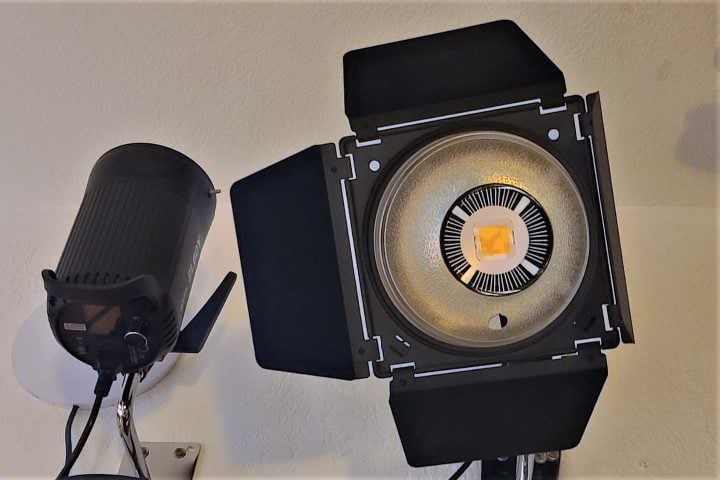
You can also shape the light on some fixtures through lenses. This works similarly to how theatrical lights work. More and more lighting from Hollywood and the theater has now moved into our homes, retail spaces, and business.
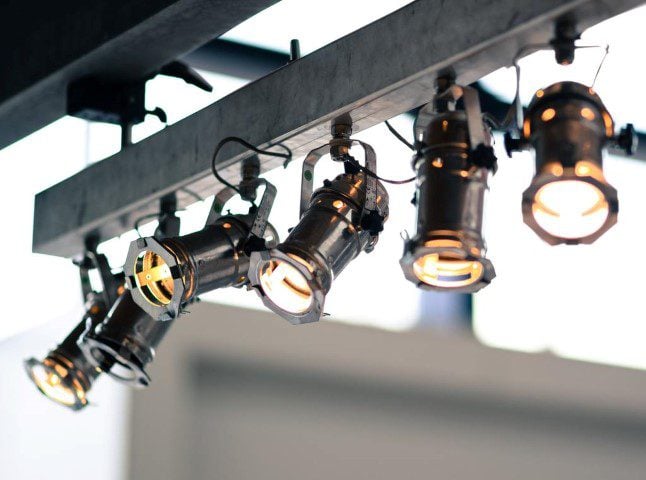
At the Polk Museum of Art, for years we kept 6 bulbs styles around in an outdoor PAR 38 bulb before switching to LEDs. We could illuminate anything with those mounted on their tracks. We had a 90W flood and spot, 60W flood and spot, and a 45W flood and spot. The three different wattages gave me three different brightness levels on the same dimmable track.
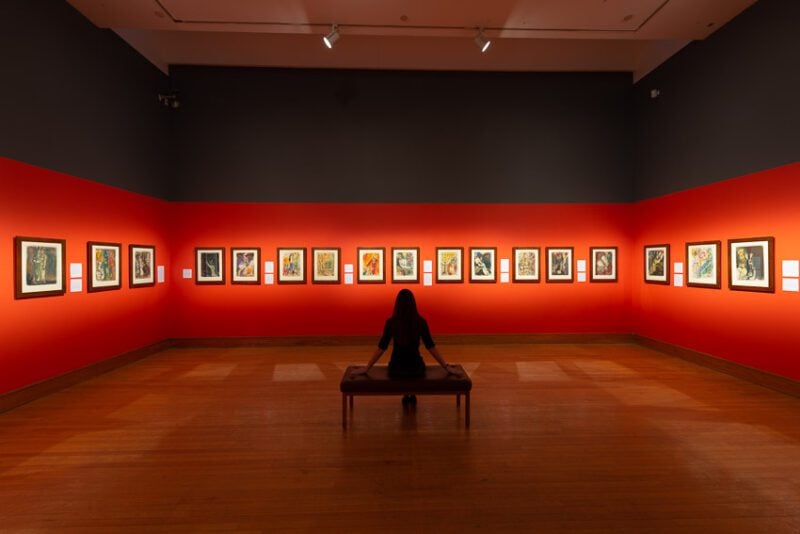
Now we’ve switched to LED bulbs at the Museum. A single bulb style with magnetic lenses that stick on the face handles many of our needs. These lenses change the shape of the light from either spot, flood, or oval. With this, we can shape the light beam to fit the shape of the artwork on the wall.
It’s a brilliant solution, but good luck finding them now!
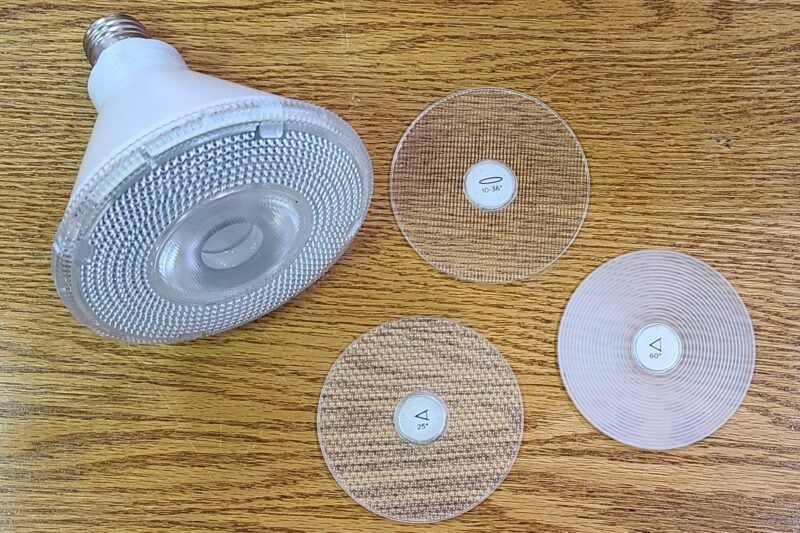
Lumens, Watts, and Energy Use – LED Lighting Wins vs Incandescent Again
Watts used to be a good measure of the brightness of a lightbulb. The higher the wattage, the brighter the bulb…and the more electricity it used. Roughly speaking, a 90W bulb was twice as bright as a 45W bulb. For all you photography/videography people out there, you gain approximately one stop of light by doubling the power of your bulb.
The Wattage Equivalent Scale
With the advent of compact fluorescent bulbs, manufacturers had to come up with a new way to compare the brightness of different bulbs, especially incandescent vs fluorescent. They came up with an “equivalent” scale. As far as I know, there is no specification on what the equivalent brightness actually means. This is why some manufacturers’ 60W equivalent bulb is not as bright as others. You get what you pay for. Sticking with name brand companies like Philips, GE, or Sylvania typically gets you brighter bulbs than generic Chinese knockoffs.
So exactly how much more energy-efficient are modern LED bulbs vs traditional incandescent? LED bulbs are generally around 45% more energy-efficient than fluorescent. According to the manufacturers, at normal usage, every 60W equivalent LED bulb in your home costs about $1.10 a year to operate. Every 60W equivalent compact fluorescent costs $1.58. Every traditional 60W bulb you own will run you $7.23! All of this assumes the industry-standard three hours per day and $0.11 per KWh for electricity.
Note: If you haven’t yet made the switch to LED bulbs, check with your power company. They may have some sort of incentive program to help you make the switch or give you a price break after you make the switch, especially if you are a business.
Lumens
Most lightsnow give you a lumen rating. Even flashlights carry this specification. ANSI lumens is a good measure of how bright a bulb is. The Fenix flashlight I carry in my pocket all the time is rated to 1600 lumens and is brighter than the high beams of many cars.
Recently, when I was in the Publix grocery store, I noted that 60W equivalent LED bulbs produce around 800 lumens. 40W equivalent bulbs produce 410 lumens. Each package has a very clear chart that gives you the information to make an informed decision on exactly what each bulb will do.
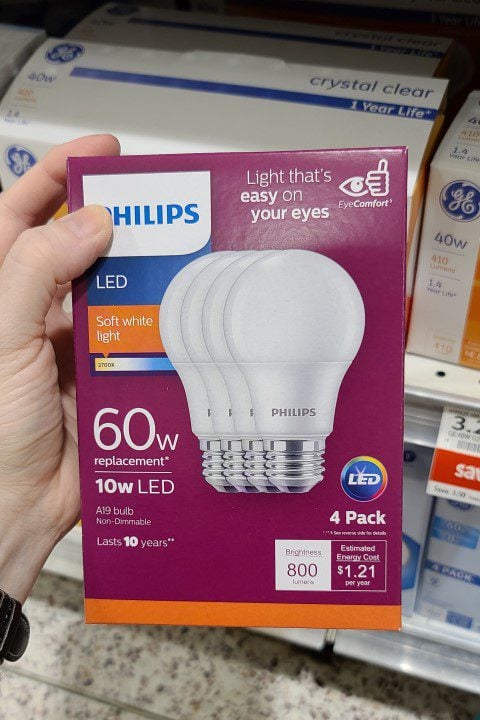
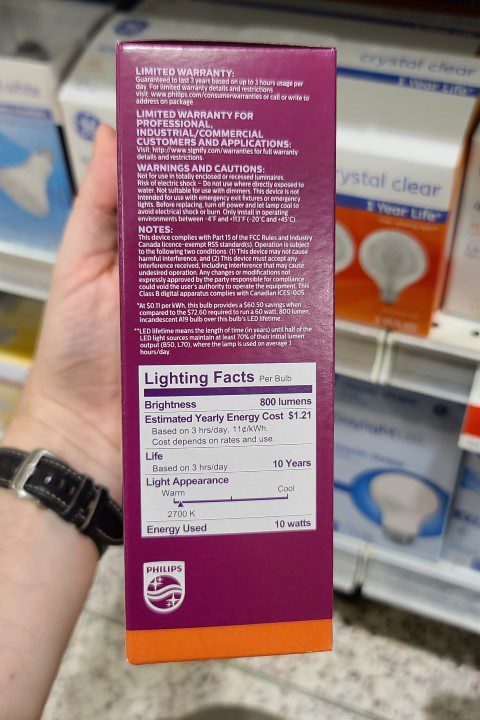
Energy Savings Case Study
At the Polk Museum of Art, we have close to 200 track lights in our galleries. We run our lights 9 hours a day. This means when we used incandescent halogen lights, each lightbulb was using $65 worth of electricity a year. That’s $13,000 just to light our galleries! Once we made the switch to LED, our annual power bill dropped dramatically to just $600!
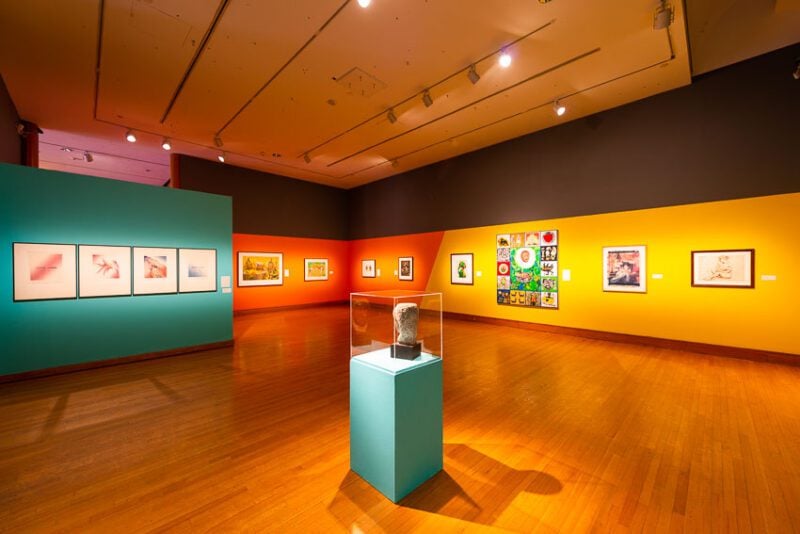
The Dark Side of Lighting
When comparing incandescent vs LED or fluorescent lighting, realize that all lamps have their pros and cons. Incandescent bulbs give off very pleasing looking light but give off too much heat and use too much electricity. Fluorescent lamps save on electricity, but the light is typically not as pleasant to work around. Fluorescent lights are also known to flicker. Many people are sensitive to the flicking and it can cause headaches. We just removed the fluorescent bulb over one of my coworker’s desk and replaced it with a LED lamp in the corner. Her afternoon headaches are gone. The flickering can also interfere with video cameras. Finally, fluorescent lamps have a ballast that periodically needs to be replaced. This can be expensive, particularly if you have to hire an electrician to do the work.
LED bulbs save the most electricity even vs fluorescent lamps. Many new mirrorless cameras have a silent mode. In this mode, horizontal patterns of dark and light appear when taking photos in rooms with LED bulbs. It is more obvious in the photo below when taking photos of an LED projector. This silent mode is the mode I want to shoot in all the time, especially when I shoot things like weddings. However, if I shoot a wedding in a church that has converted to LED bulbs, these lines are going to appear, just not as distinctive as the projector below but still noticeable. For this reason alone, wedding venues may wish to continue using halogen lights. Electricity saving is not as important since they may only be turned on a few hours a week.
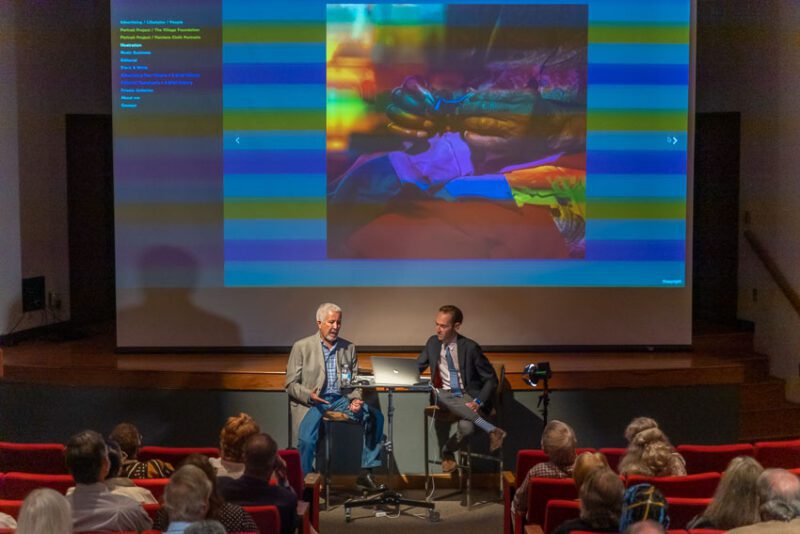
RGB LED Lighting – The Latest Fad
Thanks to YouTube, TikTok, and Instagram, many people of a certain age are using colored RGB LEDs to light their homes, apartments, and dorms. RGB stands for Red, Green, and Blue. With these three colors, you can mix any other color. This look can look very nice or it can look incredibly cheesy. Kind of like the difference between Las Vegas…and Las Vegas theme night at church Bingo. Here is a good video on how to do RGB lighting the right way.
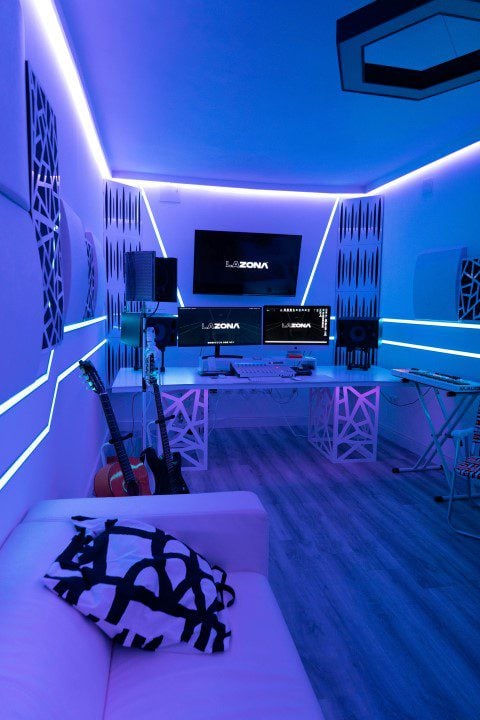
When in Doubt, Seek Professional Help…with Your LED Lighting
There are a LOT of options out there when it comes to choosing fixtures. So many that when I need a fixture for the Museum, I do not go to Lowes or Home Depot to buy one. Instead, I go to a lighting specialty shop such as the Lighting Hut in Lakeland, FL, and tell them exactly what I am looking for and my price range. Often, after developing a relationship with a supplier, they will actually come to you so they can see your space. They can work with you to find exactly what you need. That’s much better than having to settle for what the big box store carries. And best of all you are supporting a local business.
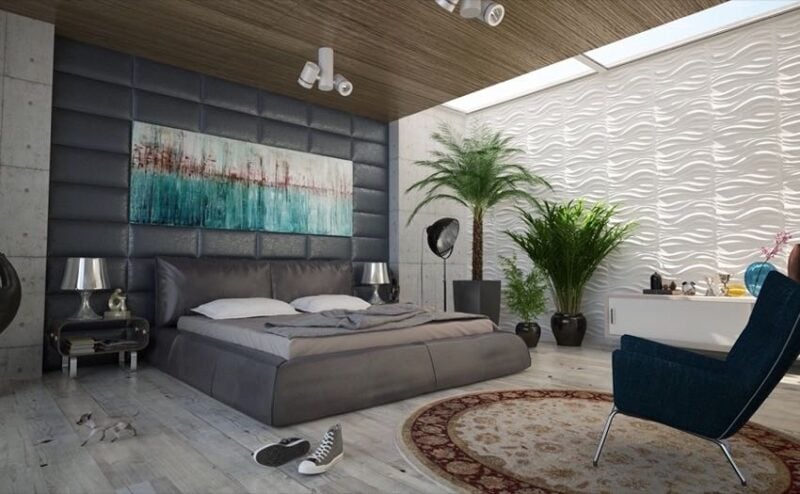
Fluorescent vs LED vs Incandescent Lighting Summary
In most instances, upgrading to LED lights vs incandescent bulbs or fluorescent tubes makes a ton of sense. LED lighting can typically provide more light and it’s significantly more energy-efficient. LED also lasts longer vs incandescent or fluorescent lamps.
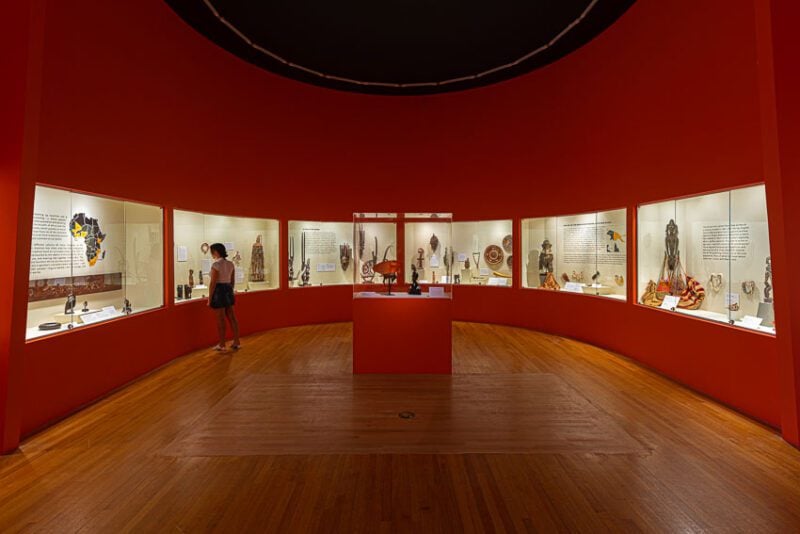
The main drawback used to be price. However, LED bulbs, lamp, and fixture prices have dropped dramatically over the past decade. Lastly, LED bulbs tend to be physically more durable. This is especially helpful in tools like flashlights and work lights. Your biggest decision is likely to be choosing between 3000K or 5000K color temperatures.

